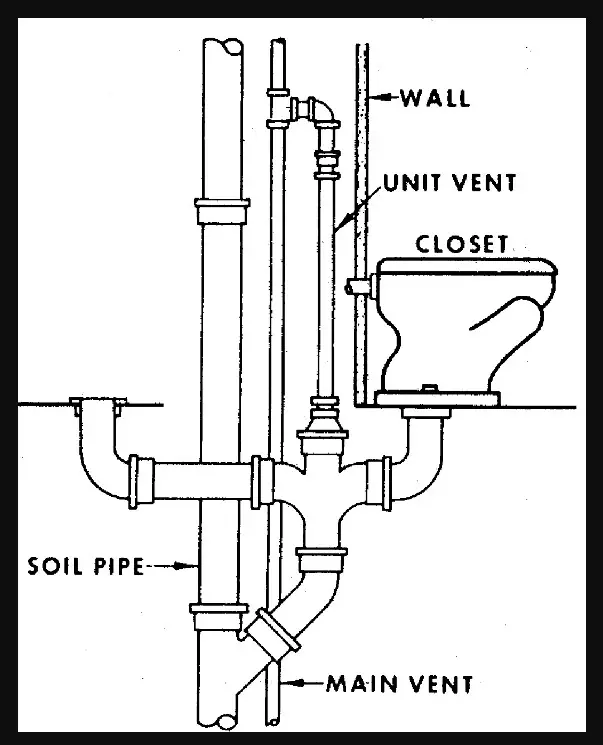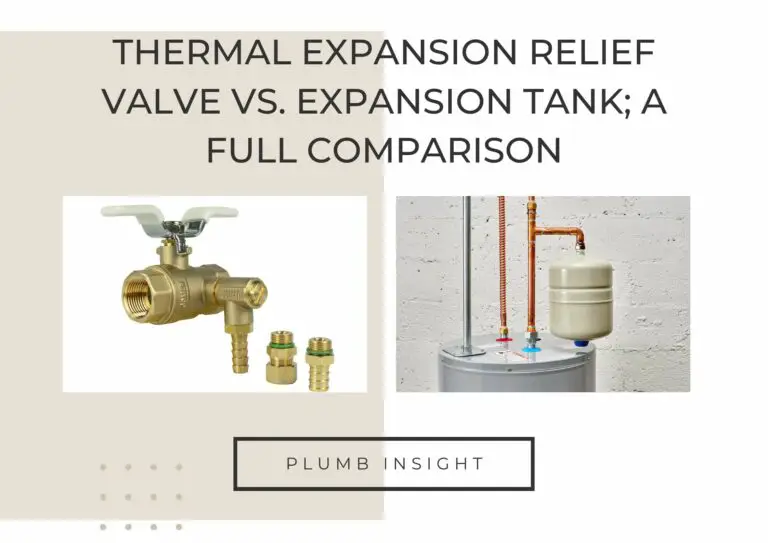Back to Back Toilet Plumbing; Everything You Need To Know
Back-to-back toilets, also known as tandem toilets, are a unique plumbing solution gaining popularity in modern bathrooms. This innovative setup involves placing two toilets back-to-back on the same plumbing drain line.
But what are the advantages and drawbacks of this unconventional design? In this blog post, we’ll explore the ins and outs of back-to-back toilet plumbing, discussing its space-saving benefits, installation considerations, and whether it’s the right choice for your bathroom.
Table of Contents
What is Back-to-Back Toilet Plumbing?

Back-to-back toilet plumbing refers to a unique bathroom layout where two toilets are installed back-to-back, sharing the same drain and waste pipe. This design is often used in bathrooms where space is limited or where multiple fixtures are needed in a compact area, such as public restrooms, commercial settings, or even residential bathrooms with specific spatial constraints.
In a back-to-back toilet setup, the toilets are positioned with their tanks and bowls facing opposite directions but connected to the same plumbing infrastructure. This arrangement allows for efficient use of space while still providing separate toilet fixtures for users. However, it requires careful planning and installation to ensure proper drainage and plumbing connections.
Proper ventilation and slope of the waste pipe are essential to prevent issues like clogs or sewage backups. While back-to-back toilet plumbing can be a space-saving solution, it’s important to consult with a professional plumber to ensure it meets local building codes and functions effectively.
How do you plumb a back-to-back toilet?
Plumbing a back-to-back toilet setup involves careful planning and installation to ensure proper drainage and plumbing connections. Here are the general steps to plumb a back-to-back toilet arrangement:
- Assess the Space:
- Measure the available space and ensure it meets local building codes and regulations for bathroom fixtures’ placement.
- Locate the Drain and Vent Stack:
- Determine the location of the main drain line and the vent stack within the wall. Ensure there is enough room to accommodate two toilets.
- Install the Drain Flange:
- Install a double sanitary tee with two 90-degree elbows to create a Y-shaped fitting in the main drain line.
- Attach a drain flange to the top of the sanitary tee, ensuring that the flange is level and properly aligned with the toilets.
- Position the Toilets:
- Place the two toilets back-to-back over the drain flange. The toilet bowls should face opposite directions.
- Ensure that the toilets are level and properly spaced apart, adhering to the manufacturer’s recommendations.
- Connect the Toilets:
- Use a double-wax ring or a special offset wax ring to create a watertight seal between each toilet’s flange and the toilet base.
- Secure the toilets to the floor using toilet flange bolts and nuts.
- Connect the Vent Pipes:
- Connect each toilet’s waste pipe to the respective inlet on the double sanitary tee using PVC or ABS pipes and appropriate fittings.
- Install a vent pipe for each toilet, ensuring they are properly sloped and connected to the vent stack.
- Install Water Supply Lines:
- Connect the water supply lines to the inlet valves on the toilets, providing water for flushing and refilling the tanks.
- Test the System:
- Turn on the water supply and flush both toilets to check for proper drainage and flushing functionality.
- Check for any leaks or issues with the plumbing connections.
- Secure Toilets and Finish:
- Tighten the toilet bolts and nuts to secure the toilets to the floor.
- Install the toilet tanks, seats, and any other accessories.
- Inspection and Code Compliance:
- Contact your local building department for an inspection to ensure that the back-to-back toilet plumbing meets all local plumbing codes and regulations.
It’s crucial to consult with a professional plumber or contractor experienced in back-to-back toilet installations to ensure that the plumbing is done correctly and in compliance with local codes. Improper installation can lead to drainage issues, leaks, or other plumbing problems.
Rough Plumbing For Rear Discharge Toilet; Complete Guide
plumbinsight.com
Back-to-back toilet plumbing diagram
Here is how back-to-back toilet plumbing is typically arranged.

In a back-to-back toilet plumbing setup:
- Toilet Bowls: Two toilet bowls are positioned back-to-back, facing opposite directions.
- Drain Flange: A double sanitary tee with two 90-degree elbows is installed in the main drain line within the wall. This creates a Y-shaped fitting. A drain flange is attached to the top of the sanitary tee.
- Waste Pipes: Each toilet’s waste pipe connects to the respective inlet on the double sanitary tee. These waste pipes extend from the toilet bowls to the sanitary tee, allowing waste and wastewater to flow into the shared drain.
- Vent Pipes: Separate vent pipes are connected to each toilet’s waste pipe, ensuring proper venting and allowing sewer gases to vent outside. Vent pipes should be properly sloped and connected to the building’s vent stack.
- Water Supply Lines: Individual water supply lines connect to the inlet valves on each toilet, providing water for flushing and refilling the tanks.
- Floor Bolts: Floor bolts with wax rings or offset wax rings create watertight seals between the toilets’ flanges and bases. These bolts secure the toilets to the floor.
- Tank and Seat: The toilet tanks are installed on top of each toilet bowl, and seats and accessories are added as needed.
Please note that this is a simplified description, and actual installations may vary based on specific plumbing codes, manufacturer instructions, and the layout of the bathroom. Professional installation and compliance with local plumbing regulations are crucial for a safe and functional back-to-back toilet plumbing system.
What are the advantages of back-to-back toilet plumbing?
Back-to-back toilet plumbing offers several advantages, especially in situations where space is limited or specific design considerations are necessary. Here are the key advantages of this plumbing arrangement:
- Space Efficiency: Back-to-back toilets are an excellent space-saving solution, making them ideal for small bathrooms or restrooms with limited square footage. By positioning the toilets back-to-back, you maximize the use of available space, allowing for the installation of multiple fixtures in a compact area.
- Cost Savings: Installing two toilets with a single shared drain line can be more cost-effective than providing separate plumbing connections for each toilet. This can result in reduced material and labor costs during installation.
- Optimized Traffic Flow: In commercial settings like public restrooms, back-to-back toilets can help optimize traffic flow by providing multiple fixtures in a single location. This minimizes the need for long rows of individual stalls, making it more convenient for users.
- Design Flexibility: Back-to-back toilets offer flexibility in bathroom design. They allow architects and designers to create unique layouts and configurations that meet specific aesthetic and functional requirements.
- Accessibility: For facilities that need to provide accessible restrooms according to ADA (Americans with Disabilities Act) guidelines, back-to-back toilets can be arranged to accommodate ADA-compliant stalls and fixtures while conserving space.
- Ease of Maintenance: Because back-to-back toilets share a common drain line, maintenance and plumbing repairs can be more accessible and cost-effective. This can result in reduced downtime and maintenance costs over time.
- Conservation of Resources: In some cases, back-to-back toilets can help conserve resources like water and energy by providing multiple fixtures in one location. Dual-flush or high-efficiency toilet models can further enhance water savings.
While back-to-back toilet plumbing offers numerous benefits, it’s essential to ensure proper installation and compliance with local plumbing codes and regulations to avoid potential issues with drainage, ventilation, and maintenance. Consulting with a professional plumber or contractor experienced in this type of installation is advisable for optimal results.
What are the disadvantages of back-to-back toilet plumbing?
While back-to-back toilet plumbing has its advantages, it also comes with some disadvantages and considerations that should be taken into account:
- Privacy Concerns: Back-to-back toilets lack the privacy that individual toilet stalls provide. Users may feel uncomfortable when using the restroom in close proximity to others, potentially leading to decreased comfort and dignity.
- Space Limitations: In smaller bathrooms or restrooms with limited space, installing back-to-back toilets can be challenging. This configuration may not be feasible when there’s insufficient room for users to move comfortably between the toilets.
- Installation Complexity: Plumbing back-to-back toilets requires precise installation to ensure proper drainage, venting, and alignment. It can be more complex and may require professional expertise, increasing installation costs.
- Ventilation Challenges: Ensuring proper ventilation for back-to-back toilets can be more complicated than for single toilets. Adequate venting is essential to prevent sewer gas odors and maintain efficient drainage, adding to the complexity of the installation.
- Cleaning and Maintenance: Cleaning and maintenance can be more challenging due to the proximity of back-to-back toilets. Cleaning staff may have difficulty accessing and cleaning shared components, potentially leading to hygiene concerns and increased maintenance efforts.
These disadvantages highlight the importance of careful planning and consideration when opting for back-to-back toilet plumbing. It’s essential to evaluate the specific needs of the space, user comfort, and compliance with local building codes and regulations to determine whether this configuration is the right choice.
Hose Clamp Alternatives; Best Alternatives Explained
plumbinsight.com
Some related FAQs
Is back-to-back toilet plumbing more complex to install than traditional single toilets?
Yes, back-to-back toilet plumbing can be more complex to install. It requires precise alignment, proper venting, and careful consideration of drainage. Professional expertise is often needed to ensure correct installation.
How do you ensure proper ventilation with back-to-back toilets?
Proper ventilation is crucial to prevent sewer gas odors and maintain efficient drainage. Vent pipes should be connected to each toilet’s waste pipe and sloped appropriately, ultimately connecting to the building’s vent stack. This ensures that gases are vented outside.
Can back-to-back toilets save water and energy?
While back-to-back toilets can be more space-efficient, water and energy savings depend on the type of toilets used. High-efficiency toilets (HETs) can contribute to water conservation, but individual fixtures’ water-saving features play a more significant role in reducing consumption.
Are there any specific building codes or regulations for back-to-back toilet installations?
Building codes and regulations vary by location, so it’s essential to consult with local authorities or a licensed plumber. Compliance with code requirements for drainage, venting, and accessibility is crucial for a safe and legal installation.
Can back-to-back toilets be installed in residential bathrooms?
Yes, back-to-back toilets can be installed in residential bathrooms, particularly when space is limited. However, they are more commonly used in commercial or public restroom settings due to the need for multiple fixtures in confined spaces.


